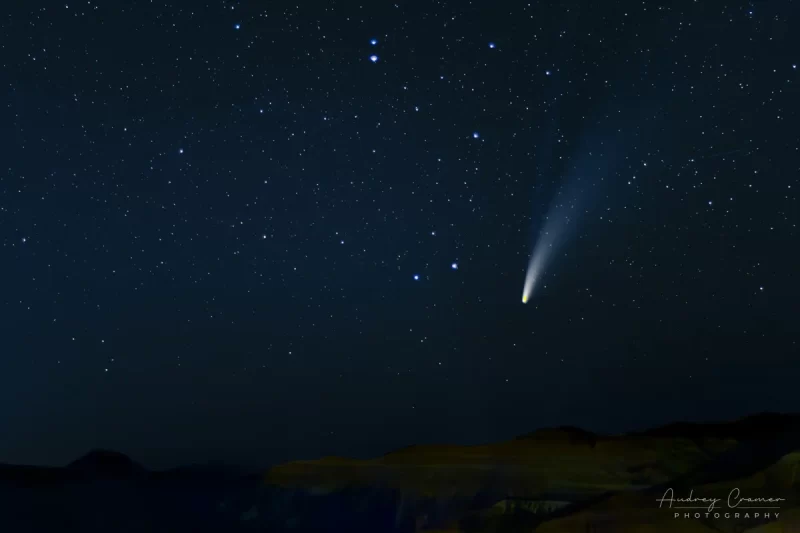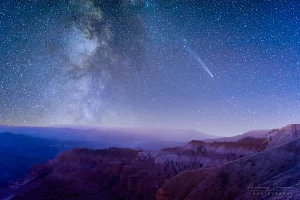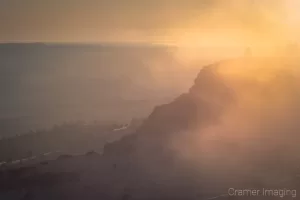I’ve been wanting to start into astrophotography for a while. It’s an amazing branch of photography which complements and compliments my landscape photography well. Well, the Neowise comet was a perfect opportunity for me as a photographer. So, here we go.
There’s been a lot of photos of the comet circulating around the internet lately. It’s time for me to share my own take on the passing comet.
When I started comet-hunting, I started thinking about where to go. As a landscape photographer, I can’t simply point my camera at the sky, snap a shot, and call it good. I need to incorporate the surrounding landscape into the frame as well. I started working on a good place to shoot photos of the comet. My chosen location depended highly upon which time of day I chose to take my photos. As I chose an evening shot, I needed a good landscape which would support it. I found my location in the nearby Cedar Breaks National Monument.
Thanks to the national monument’s height of over 10,000 feet above sea level, I had added advantages when it came to my photos. The atmosphere is thinner, so the stars (and the comet) are brighter. It was a perfect setup once I found the right vantage point.

The comet was brilliant but faint. The thing about astrophotography is that the sky is not as bright as the photos are. All those bright stars, and the like, are enhanced. Still, I made a point about getting the comet right.
The Neowise comet was not the only interstellar object which was showing up that night. I spun around almost 360 degrees and noticed the Milky Way galaxy arm was also lighting up the sky in all its glory. I knew that I couldn’t miss this additional opportunity as well.

I’m quite impress with this early forage into astrophotography on my part. I think that I’ll work on adding more of it into my landscape photography. Look forward to seeing more of this kind of photography in the future.
So, what do you think about my astrophotography pictures? Share your thoughts in the comments section below.



